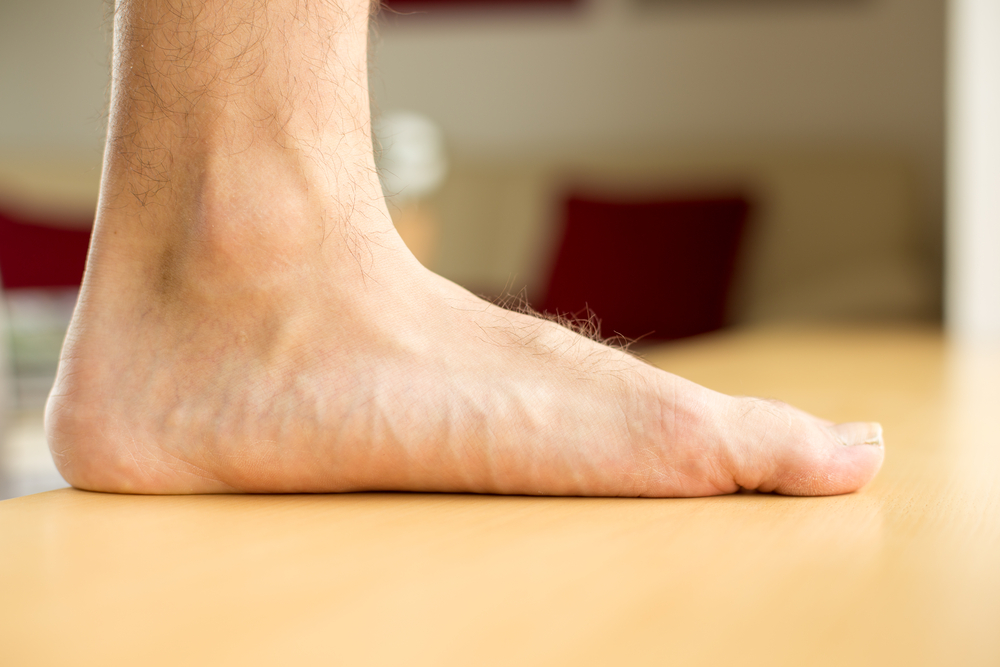Many people invest significant effort in caring for their skin, hair, and weight, yet often overlook the wellbeing of their feet. These structures support the entire body, absorb shock, and allow smooth movement, making their health extremely important. Flat feet is one condition that often goes unnoticed until discomfort appears. Understanding its nature, causes, and treatment options can help prevent long-term problems.
What Are Flat Feet?
In adults, a natural arch forms in the middle of the foot when standing. The height of this arch varies from person to person. Children, however, may naturally appear to have flatter feet until around age nine or ten, when the arch typically develops.
The arch is created by the coordination of foot bones and tendons in the lower leg. When these tendons fail to pull the bones into position properly, the arch becomes low or absent, resulting in flat feet.
When Should You Be Concerned?
Flat feet that have been present since childhood and look the same on both sides are often harmless. However, attention is needed if:
- One foot becomes flatter than the other
- Your arch collapses over time
- You experience recurring pain in the foot, knees, lower back, or hips
- Walking or standing for short periods leads to fatigue
- Your shoes wear out unevenly
- Your feet feel unusually stiff or overly flexible
Such signs may indicate an abnormal change that requires medical evaluation.
Common Causes
Several factors can contribute to the development of flat feet, including:
- Tarsal coalition: A childhood condition where certain foot bones are abnormally joined, causing stiffness and a flat appearance.
- Tendon problems: Weakening or damage to the main tendon that supports the arch can cause gradual flattening.
- Excess body weight: Added pressure on joints may reduce stability and affect foot structure.
- Arthritis: Degeneration in the middle or back part of the foot can flatten the arch over time.
Symptoms to Watch For
Flat feet may lead to:
- Pain along the inner side of the foot or ankle
- Difficulty running or walking long distances
- Swelling near the inside of the ankle
- Numbness or tingling caused by nerve compression
Diagnosis
A healthcare professional will assess your symptoms, examine your feet, and check for swelling or tenderness. X-rays provide information on bone alignment and signs of arthritis, while MRI scans help evaluate tendon condition or possible bone irregularities.
Stages of Flat Feet
Flat foot conditions are often grouped into stages:
- Stage One: Tendon inflammation without deformity
- Stage Two: Visible flattening but no stiffness
- Stage Three: Increased pain and stiffness due to arthritis
- Stage Four: Advanced arthritis extending into the ankle joint
Treatment Options
Non-Surgical Care
Flexible flat feet may respond well to supportive insoles and physiotherapy. These methods reduce discomfort and prevent the condition from worsening, although they do not permanently restore the arch. Athletes or highly active individuals may require more advanced solutions.
Surgical Approaches
Surgery may be recommended for severe or progressive cases. Procedures may involve shifting the heel bone, repairing or replacing damaged tendons, or fusing joints to reduce pain in advanced stages.
When to Consider Surgery
If symptoms persist despite conservative care or the deformity continues to worsen, surgical correction may provide long-term relief. Many patients benefit significantly when other treatments fail to offer improvement.
Always consult with your doctor or a healthcare professional before making any major changes to your diet, lifestyle, or medical routine. They can offer personalized advice based on your current health condition and medical history. Note – If you have any health-related concerns, please call us at +91-9058577992 to receive free consultation from our experienced doctors. Thank you
